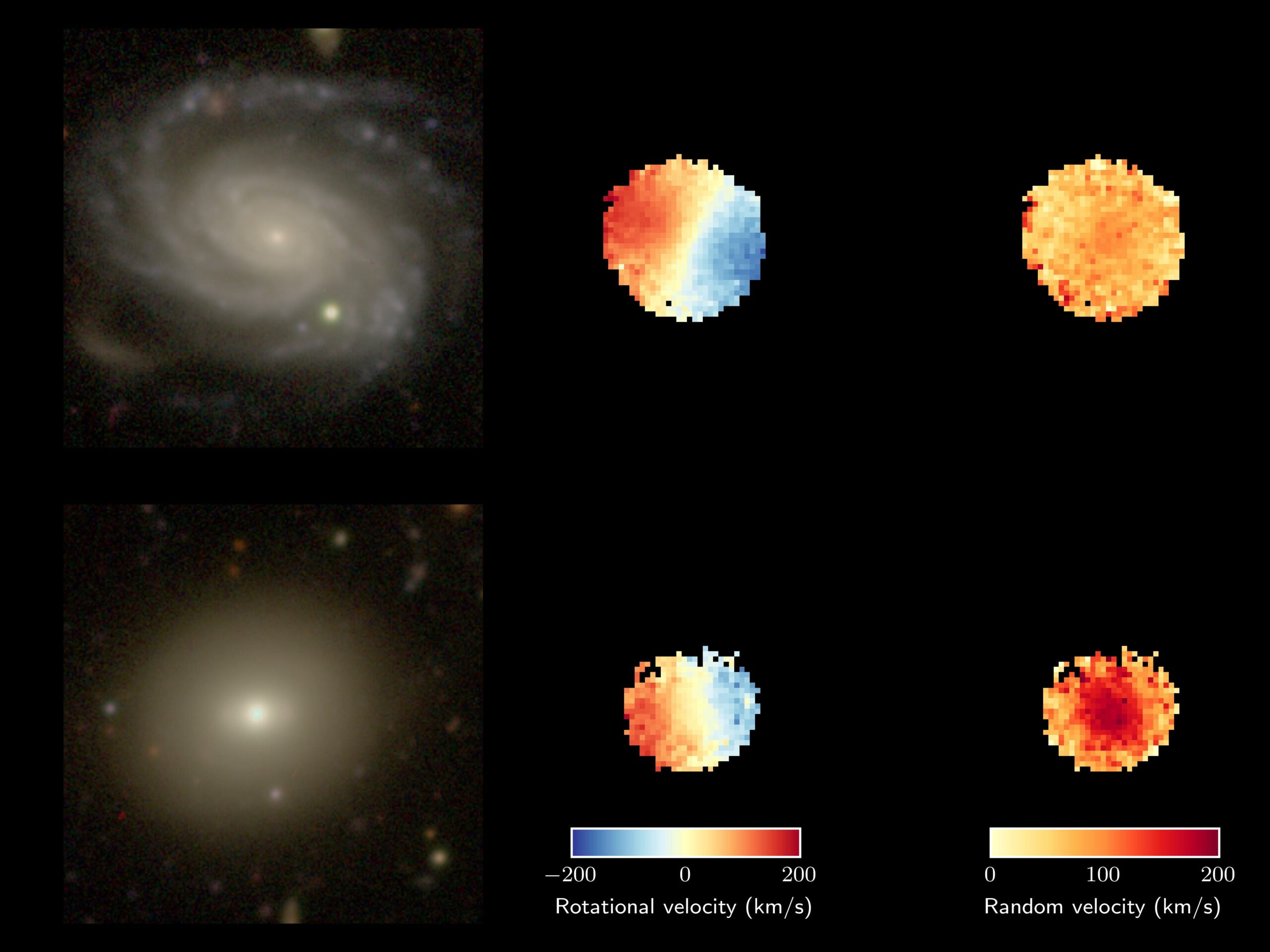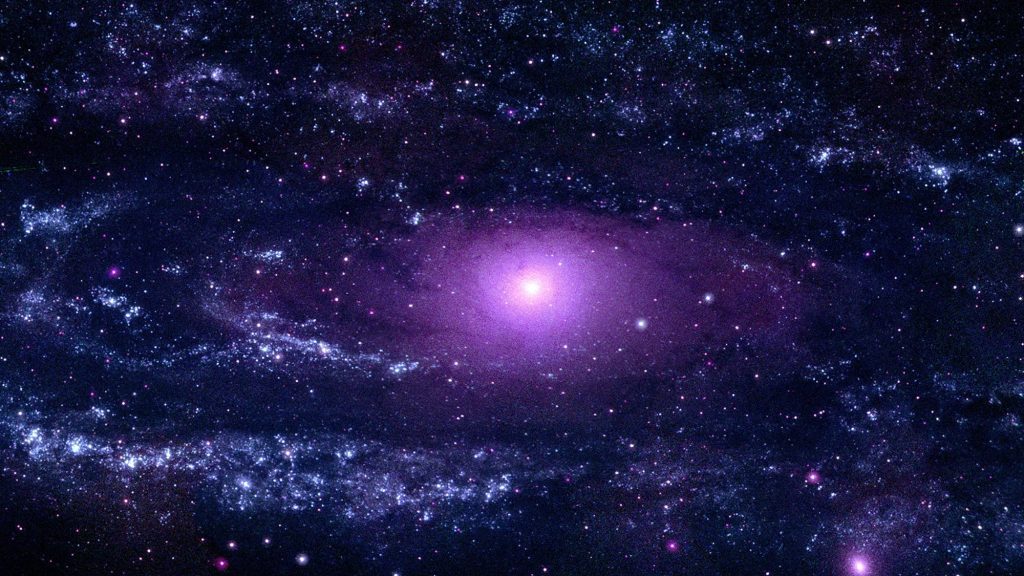Galaxies come in various shapes and sizes. Some have strong, spiral arms. Others are resembling a necklace or oblong. They start their lives rotating in an organized manner, but the motion of the stars gradually becomes more random and less structured. Astronomers have not been able to identify the reasons behind the changes, but new research proposes a relatively simple explanation–aging. As galaxies get older, they tend to be more disordered. The findings are detailed in a study published April 3 in Monthly Notices of the Royal Astronomical Society (MNRAS).
[Related: Listen to three breathtaking NASA images.]
“When we did the analysis, we found that age, consistently, whichever way we slice or dice it, is always the most important parameter,” study co-author and University of Sydney observational astrophysicist Scott Croom stated. “Once you account for age, there is essentially no environmental trend, and it’s similar for mass. If you find a young galaxy it will be rotating, whatever environment it is in, and if you find an old galaxy, it will have more random orbits, whether it’s in a dense environment or a void.”

When galaxies are young, they are creating stars rapidly. Older ones usually stop forming new stars. Earlier studies suggested that the galaxy’s environment or mass were the more important factors influencing how galaxies behave and move. According to the team, these ideas are not necessarily incorrect.
“We do know that age is affected by [the] environment. If a galaxy falls into a dense environment, it will tend to shut down the star formation. So galaxies in denser environments are, on average, older,” study co-author and University of Sydney astronomer Jesse van de Sande stated. “The point of our analysis is that it’s not living in dense environments that reduces their spin, it’s the fact that they’re older.” For example, our own 13.6 billion year-old Milky Way galaxy still has a thin star forming disk and it is considered a high spin rotational galaxy. Older galaxies also move around more randomly than younger ones, no matter how densely packed with energy their environments are.
In the new study, an international team of scientists used data from observations from the SAMI Galaxy Survey. SAMI has surveyed 3,000 galaxies across a wide range of cosmic environments, which helped the team compare and contrast different types of galaxies. Having more accurate observations of galactic behavior helped them fine-tune their models of how the universe developed.
[Related: JWST pictures display the swirling arms of 19 spiral galaxies.]
In upcoming research, the team wants to produce more detailed simulations of galaxy evolution using the University of Sydney’s Hector Galaxy Survey.
“Hector is observing 15,000 galaxies, but with better spectral resolution, which allows for measuring the age and spin of galaxies even in much smaller galaxies and with more detailed environmental information,” study co-author and Hector Galaxy Survey lead Julia Bryant stated in a declaration.
The main goal of this work is to help scientists better understand how the universe has changed over billions of years and how our solar system formed.









